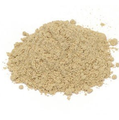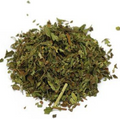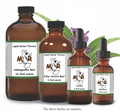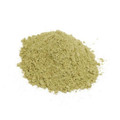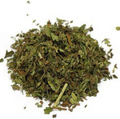 Loading... Please wait...
Loading... Please wait...- Home
- Bulk Herbs
- Herbs (S)
- Spearmint Leaf Powder
- Home
- Herbs - Organically Grown & Wild Crafted USA
- R S T
- Spearmint Leaf Powder
Spearmint Leaf Powder
Product Description
Spearmint Leaf Powder
Organically Grown USA
Also Known As – Mentha spicata and seldom, Mentha spicata var. crispa, Common Mint, Garden Mint, and Silver Mint.
Overview - Spearmint herb or garden mint or common mint has long been reputed for its characteristic aroma it imparts to the recipes it added to. The least pungent and subtle among the species of mint family, this unique herb is one of chef’s main culinary favorites.
Medicinal Uses - Some people consume spearmint to help alleviate symptoms of nausea, indigestion, gas, headache, toothache, cramps, and sore throat. Spearmint is also applied topically (to the skin) to help reduce swelling due to nerve or muscle pain. Can be used as a tincture.
Parts Used – The leaf, dried and cut.
Precautions - Use peppermint, not spearmint, for gallbladder complaints.
Preparation and Dosage - Its fresh leaves, either chopped or ground, can be added in the salads. It is good for making mint sauce. To prepare mint sauce, ground fresh mint leaves mixed with yogurt, cumin and little salt. The herb is also used as flavoring agent in ice-creams, jams, cakes, jelly, etc. Spearmint tea is a popular drink. The herb is also used in cooking recipes. In general, the herb is added in small amounts, chopped or ground, to recipes at the last moment in order to retain their flavor and taste.
Disclaimer - The information presented herein by Mountain Maus’ Remedies is intended for educational purposes only. These statements have not been evaluated by the FDA and are not intended to diagnose, cure, treat or prevent disease. Individual results may vary, and before using any supplements, it is always advisable to consult with your own health care provider.








